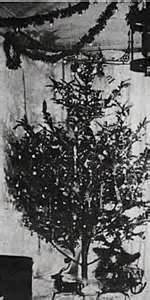Christmas Lights Began with Edison
The use of lights to celebrate Christmas goes back long enough that historians can't agree on how it started. Some say that Martin Luther began the practice of lighting candles at Christmastime. Others say that Christmas lights, even in candle form, gained popularity with the advent of the individual Christmas tree. Whatever the origin, the use of burning candles on burn-able trees wasn't all that safe.

The first home Christmas lights, though, are thought to have been put up in 1882, by Edward Johnson, who was an executive at Edison's company. He put 80 red, white, and blue lights on a small tree. Businesses soon followed Johnson's lead, extending the display to the outside of buildings. President Grover Cleveland had lights put on the White House Christmas tree for the first time in 1895. General Electric bought the rights to Edison's bulbs in 1892; and in 1900 the first known ad for tree lights appeared in print, in Scientific American. The ad contains the gentle suggestion of renting Christmas lights, mainly because they were so expensive. In 1900, one string of electric lights cost $12, which would be a few hundred dollars in 21st Century money. Technical innovations brought the price down relatively rapidly, however, and the same string of lights cost less than $2 in 1914. By the 1930s, Christmas lights of an electric fashion were ever-present across America. |
|
Social Studies for Kids
copyright 2002–2024
David White



 The electric Christmas lights that are so common today needed electricity flowing to them, which is why the story starts with
The electric Christmas lights that are so common today needed electricity flowing to them, which is why the story starts with 
